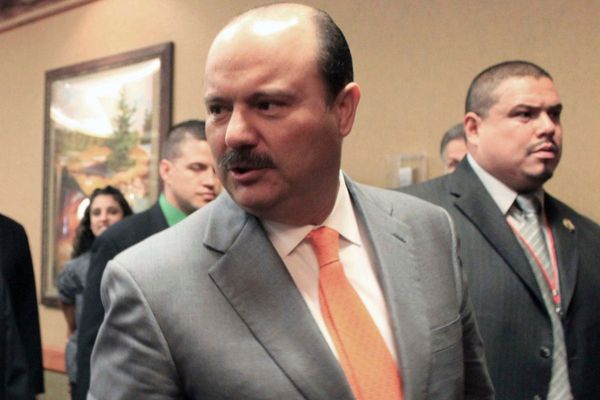Australian Prime Minister Anthony Albanese has made a landmark visit to India this week in the hopes of boosting ties in trade, education and security.
Australia’s relationship with India has been marked by short bursts of enthusiasm, interspersed with long periods of disinterest.
For a long time, Australia and India shared only superficial similarities captured by the belaboured phrase “cricket, curry, Commonwealth”.
Though cricket remains a mainstay, in the past few years the relationship has deepened. In large part this is due to the flare-up of India’s border dispute with China, and the general deterioration of Australia’s relationship with China.
Australia is now looking to India as both a geopolitical and economic partner as it seeks to diversify its markets and shape regional order in the Indo-Pacific.
Meanwhile, India looks to Australia for resources, investments and support in its ongoing disputes with China.
So what are the two sides seeking from Albanese’s visit, and what does it mean for Australia-India relations?
What we know so far
Albanese’s first official visit to India comes with a packed itinerary and a diverse agenda. There are as many as 25 business leaders accompanying him in the hope of securing lucrative agreements on economic cooperation and making some headway in negotiations for a full free-trade agreement, building on the interim agreement signed last year.
A key area is education. India has been hoping to improve its performance on higher education by encouraging foreign universities to build campuses in India.
The two countries signed agreements this week for the mutual recognition of qualifications, and to establish a Deakin University campus in India. This would be the first foreign university with a campus in India.
The two sides are also keen to increase cooperation and investment in critical minerals such as lithium, which is used in batteries, as India seeks to lower emissions. This comes despite Albanese saying in February he wanted to keep more critical minerals onshore in response to questions about China seeking approval to invest in new mines in Australia.
Albanese this week also declared India a “top-tier security partner”. This comes ahead of Australia hosting the Malabar naval exercise in August, traditionally a joint exercise between India, Japan and the US, from which it had been excluded until a few years ago.
In turn, India will step up its participation in joint military exercises with Australia.
Differences endure
However, challenges and contradictions remain, most notably the two countries’ differences over Ukraine.
Australia has strongly condemned the Russian invasion, committing hundreds of millions of dollars in military support to Ukraine, and joining Western countries in sanctioning Russia.
But India maintains its traditionally strong military and economic links with Russia. India relies on Russia for advanced military equipment and has recently increased its oil imports from the latter.
While Australia has never been outwardly excessively critical of India’s position on the Ukraine war, it will remain a thorn in the side of long-term cooperation.
A full free-trade agreement would involve reconciling different interests in key areas. Australia is focused on improving market access for agricultural and dairy products, while India’s focus is services and labour mobility. Both are sensitive political issues that will be difficult to overcome even with the large contingent of business leaders accompanying Albanese.
Shared values?
As he landed in India, Albanese declared that Australia and India had a rich friendship underpinned by “shared democratic values”. His trip began with a visit to Sabarmati Ashram, where Mahatma Gandhi once lived.
Yet, India is much further away from Gandhi today than it has ever been. In the past ten years, India has displayed increasing intolerance for dissent and has curtailed media freedom.
Minorities have been marginalised, discriminated against, and attacked, as the government and its affiliates assert Hindu nationalist politics.
Australian universities hoping to build campuses in India could face curbs on academic freedom. India’s draft guidelines for foreign universities prohibits activities that are “contrary to the sovereignty and integrity of India, the security of the State, friendly relations with foreign States, public order, decency, or morality”.
While Australia has expressed concerns about digital authoritarianism, India has used technology to curb dissent. It has also allegedly used technology to surveil opposition leaders, minorities and critics.
The frequently acrimonious responses of India’s leadership to any criticism of itself in the Western world is probably why Australia, which is anxious to cultivate India as a bulwark against China, has been loath to publicly criticise India.
The government may also be hoping that emphasising democratic values will put some pressure on India’s leadership to halt its further slide toward authoritarianism. But recent events suggests this is wishful thinking. Evidence for this includes government raids on BBC India offices after it aired a documentary critical of Prime Minister Narendra Modi.
Rather, Australia risks being seen as turning a blind eye to India’s model of electoral autocracy. This includes the persecution of academics, students, journalists, activists who languish in jail on dubious charges of sedition and terrorism.
It’s important Australia bases its relationship with India on a realistic estimation of the latter’s political and economic credentials, rather than being driven almost entirely by the strategic urgency to create a regional counterweight to China.
Priya Chacko receives funding from the Australian Research Council.
Janhavi Rajiv Pande does not work for, consult, own shares in or receive funding from any company or organisation that would benefit from this article, and has disclosed no relevant affiliations beyond their academic appointment.
This article was originally published on The Conversation. Read the original article.







